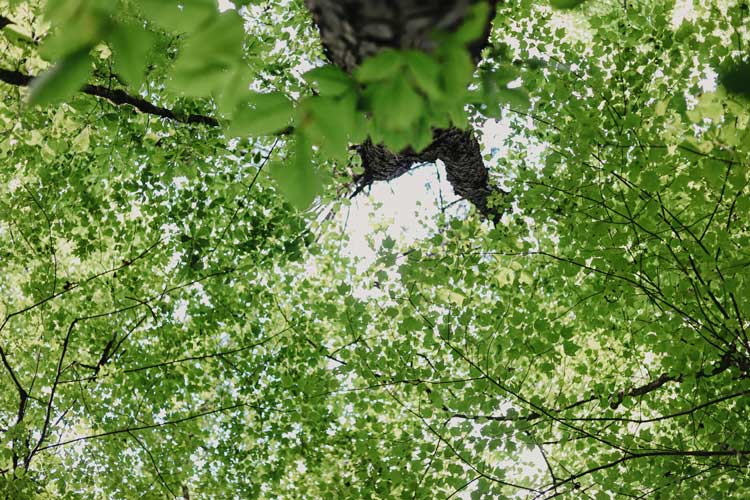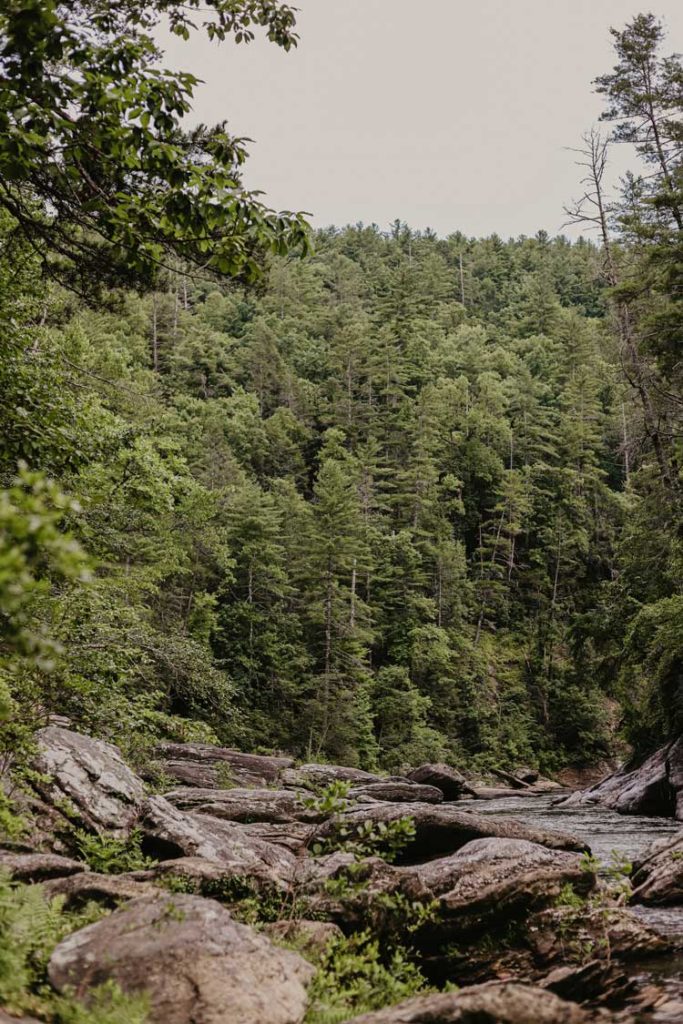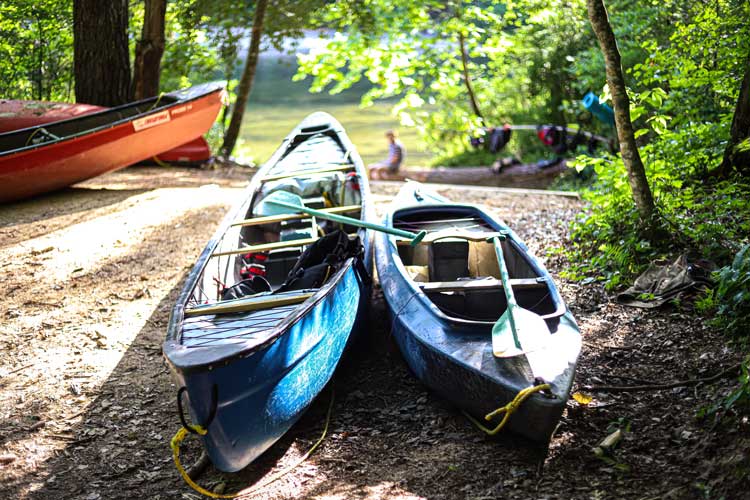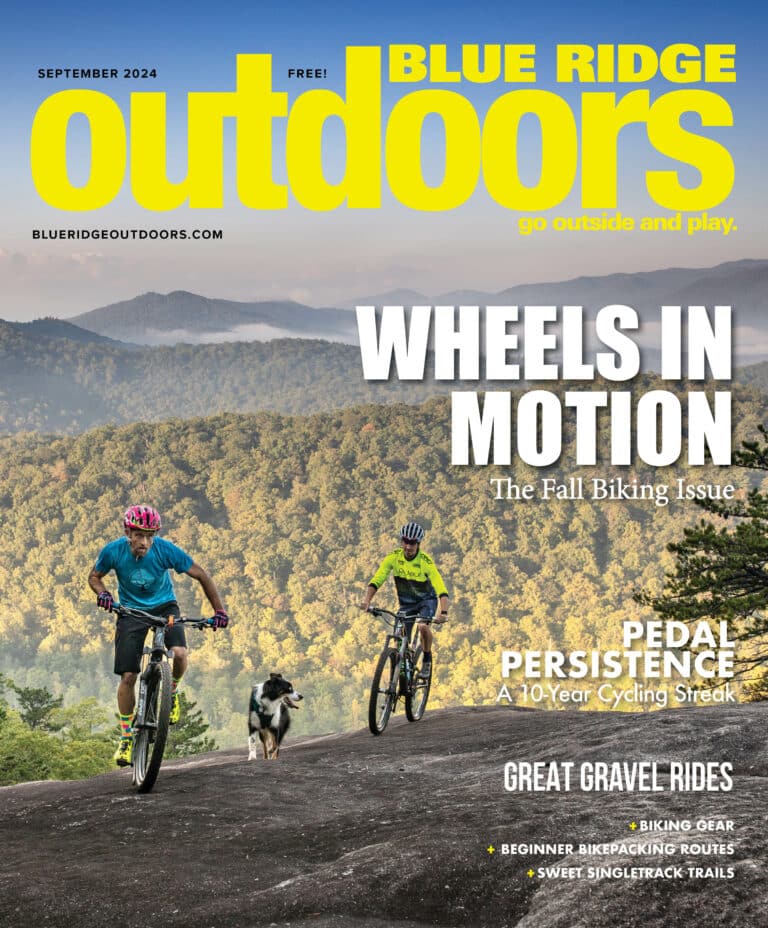National forests are managed by the U.S. Forest Service and are designed to be prosperous for all American citizens, under the protection rights to conserve and cultivate the designated areas of land, by operating under a democratic governing agency that manages it based on a Forest Plan, specifically engineered for their region.
In between the rock crevices and old-growth trees of the southern Appalachian region, green salamanders find their home. Tucked away deep into the moist, rocky faces at the headwaters of the Chattooga River, ‘near threatened’ salamanders have steadily relied on this environment to live. This area benefits from an unusually high amount of rainfall each year, helping to create unique biological diversity. This area is considered the salamander capital of the world.
The Chattooga River was the first river east of the Mississippi to be designated as a Wild and Scenic River. The Chattooga River watershed begins in North Carolina and flows down the border of Georgia and South Carolina as it winds through the rocky terrains of the Appalachian region. The U.S. Forest Service manages the Chattooga River in three different National Forest that separates each section – the Chattahoochee in Georgia, the Nantahala in North Carolina, and lastly the Sumter in South Carolina.
Creating balance between the short-term needs of people and the long-term needs of the forest, the U.S. Forest Service was founded in 1905 under the United States Department of Agriculture with a mission to carry out management of the national forest by ‘sustaining healthy, diverse, and productive forest and grasslands for present and future generations. The process for managing a national forest can be cumbersome but the National Forest Management Act of 1976 required the Forest Service of each national forest and grassland to create an effective management plan for that specific area, which is known as a Forest Plan. It is required that the Forest Plan should be revised at least every 15 years, in order to meet the needs of people and consider the changing conditions of the forest.
The Southside Project is a proposal issued by the U.S. Forest Service, in the Nantahala Ranger District, that approves forest management activates such as, tree harvesting through a commercial timber sale, repeated controlled burns, and herbicide treatment in order to regenerate younger growth within the forest. The techniques that will be used to harvest the timber are called “group selection” cuts, which is the cut of an individual tree or small group of trees to allow gaps in the canopy for understory trees to thrive, and “2-age” cuts, which means that less than 10% of trees will be left standing per acre. This is a modified form of clear-cutting.
Within the varying depths of the selected areas, old-growth trees range from over 100 years to even some exceeding 200 years old. In the Southeastern United States, only one-half of one percent of the forest is considered old growth.

The projected area is located at the headwaters of the Wild and Scenic Chattooga River and spans out over 317 acres, according to a non-profit group called the Chattooga Conservancy. The Conservancy along with many others in the public have followed this project since its original start date, in February of 2017, and have strongly bonded together in opposition to the intensity of this project. Two years later, in February 2019 the U.S. Forest Service gave the final approval for this project.
The current Forest Plan for this area (Region 8), is 15+ years old. It is now under revision. There will be a public comment period for this new Forest Plan. The outcome of that plan could mean withdrawing one stand of trees, in the approved Southside Project area, near the Whitewater River and scaling back on another stand located near that section if the Whitewater River is carried forward as eligible for the designation of a Wild and Scenic River.
During the year of 1976, U.S. Congress granted the Chattooga River to be a designated National Wild and Scenic River to ‘preserve and protect it’s free-flowing condition and immediate environments for the enjoyment of present and future generations,’ as the Wild and Scenic River Act of 1968 states. The protection for the immediate environments generally averages one-quarter mile on each side of the river.
“To protect a Wild and Scenic River, you need to protect more than just a quarter-mile on each side,” Nicole Hayler said.
Nicole Hayler was one of the founding members of the Chattooga Conservancy back in 1994 when she and her colleagues started this organization on the beliefs and efforts to “protect, promote and restore the natural ecological integrity of the Chattooga River watershed ecosystems; to ensure the viability of native species in harmony with the need for a healthy human environment; and, to educate and empower communities to practice good stewardship on public and private lands,” which has become their primary mission statement in attempts to keep the Chattooga River wild.
The Chattooga River is known for its diverse ecosystem, exquisite natural beauty, and its gnarly rapids. The free-flowing rapids have become an addiction for many people who live in Long Creek, South Carolina where rafting and kayaking industries have taken full advantage of the pristine wilderness that surrounds the river and the beast itself, the Chattooga class 4 rapids.
A kayaker, who has spent thousands of hours on the river perfecting his craft, has spent most of that time on the Chattooga. Ben Drew has become a bit of an icon in Long Creek. He and a few others are known as the Long Creek Gangsters, because they are constantly battling the rapids in their kayaks on a daily basis.
“We just go out to connect deeper with the river and improve our craft. Connecting with the river soothes our spiritual desires and we get our fix. It’s just a certain type of connection that is different from most of the other rivers around here” Drew said.
The Chattooga watershed with its endless hues of green and shaded canopies is known for its temperate climate and rich biological diversity due to the rare old-growth forest that have spent hundreds of years evolving. The green salamanders that inhabit this area move from the interlocking rock crevices to the hollows of the old-growth trees for different sections of their lifespan.

The Southside Project encompasses 317 acres divided into 16 stands. Nine of those stands totaling 196 acres are scheduled for the “2-age” cuts. The rest will be “group selection” cuts. In the 16 stands that are going to be affected by this project, 60% of those stands are considered old growth. These stands are native species of trees that have escaped harsh conditions such as wildfires, prescribed burns, windstorms and logging for over 100 plus years.
The Forest Service has recognized one stand of timber as old-growth. This stand sits perched on top of Brushy Mountain. This dense forest area is crucial to the habitat of the green salamanders.
“These rare old-growth resources need to be preserved, not liquidated,” Hayler said.
Hayler spent her summer days guiding rafts on the Chattooga during her time in college and after graduation. The deep eddies and cool water became her home. She began to notice the heavy-handed timber harvesting projects that were taking place near the Chattooga River and decided to create the Chattooga River Coalition. The non-profit group was dedicated to fighting the logging and timber harvesting that took place in the 1990s in the region that surrounded the Chattooga River. The group later changed their name to the Chattooga Conservancy and continued to be an advocate for the river with ‘request that the Forest Service should work to protect and restore the Chattooga’s watersheds native ecosystem while managing the watersheds three national forests as a single ecological unit across state lines’.
The governing agency behind the Southside Project states their mission is to, ‘sustain the health, diversity, and productivity of the nation’s forests and grasslands to meet the needs of present and future generations.’ The primary focus of this commercial timber sale is to increase the amount of younger growth in these areas creating a more resilient and sustainable forest.
The Conservancy agrees that “group selection” of mature towering trees could benefit the younger growth population in the projected areas by clearing out small sections of the canopy to resemble wildlife openings. This form of management is a more natural approach to logging.
The conservancy’s efforts to dive into the scientific facts behind this project and present them to the public has helped bring awareness to this controversial proposal by the Forest Service. The public opposed and left comments during the drafting phase of this proposal and even attended an Objection Resolution meeting with the Forest Service on November 1, 2018. After opposition from the public and other organizations, Nantahala District Ranger Mike Wilkins, who just recently retired in July after 40 years with the U.S. Forest Service, and Forest Supervisor for all National Forests in North Carolina, Allen Nicholas, has projected the start date of the Southside Project to be underway in Fall of 2020.
“Vast majority of the time, I wade through the comments. I read what people say, I look at the analysis and sometimes we just come out at different places than other people because the forest plan is really turning towards one direction, which is the direction I’m bound to follow and other people come in and want to put constraints on it that are excessive of what the Forest Plan requires and puts this kind of conflict on certain things,” Nicholas said.
In August, The U.S. Forest Service issued a proposal that would eliminate public notice, comment periods, and scientific reviews for the majority of forest project decisions. Public input has been a necessity in the past for protection and conservation ideas that the Forest Service has taken into consideration. The National Environmental Policy Act (NEPA) was created in 1970 to help the Forest Service assess environmental impacts and effects of the actions they propose by ‘preparing detailed statements assessing the environmental impact of and alternatives to major federal actions significantly affecting the environment.’ With the newly proposed revision to NEPA, to cut out public notice and option to comment on major environmental projects, scientific review would no longer be required, and public input would not be taken. This proposed revision to NEPA is thought to help the Forest Service ‘make timelier decisions based on high quality, science-based analysis’ according to the Forest Service.
Though this proposal will not take effect until it is approved and finalized. The public comment period for the new Forest Plan will still be in effect and will have impacts on the Southside Project that could potentially decrease the amount of old-growth logging that is currently set to go forth.
The efforts put forth by small non-profits, such as the Chattooga Conservancy, has helped encourage the public to keep a watchful eye on the land that surrounds them by involving the public with community outreach events, fundraisers and outdoor actives. National forest and public lands are treasures that were founded and protected centuries ago and have resisted much of this nation’s development. They have remained wild and have hosted many of the activities that take place within the outdoors. The advocacy for these wild places is held by the public.
“We own the forest service because we are the stockholders,” Drew said.








